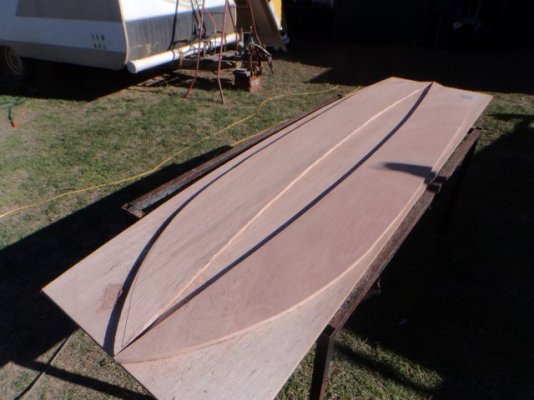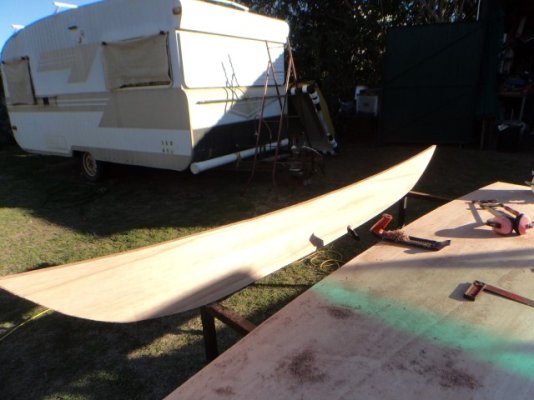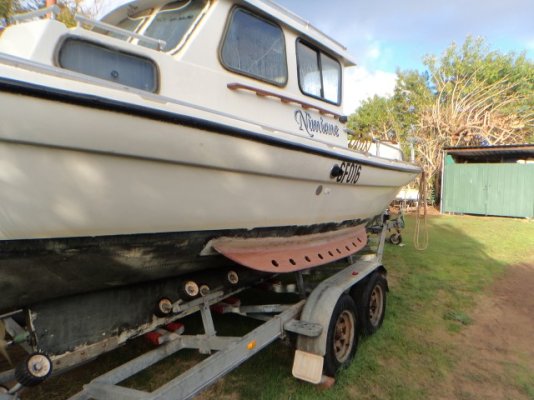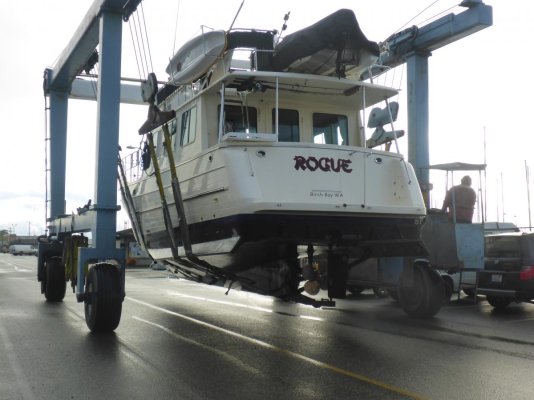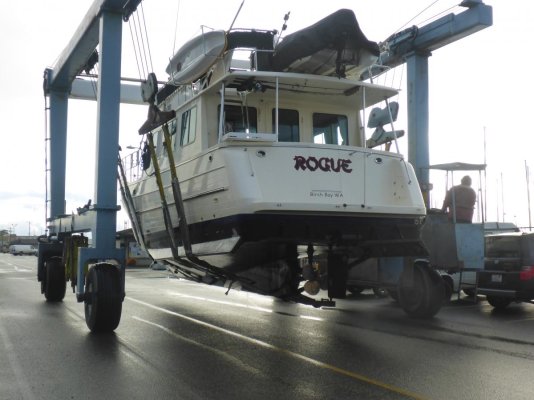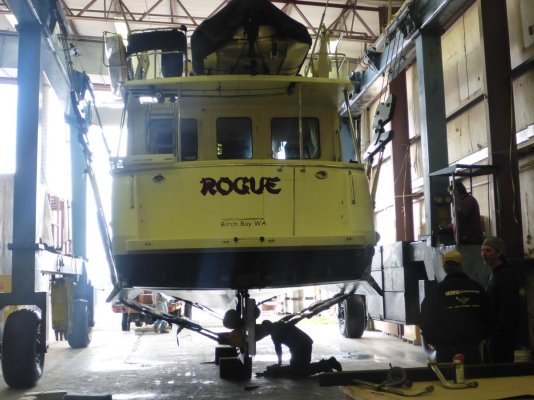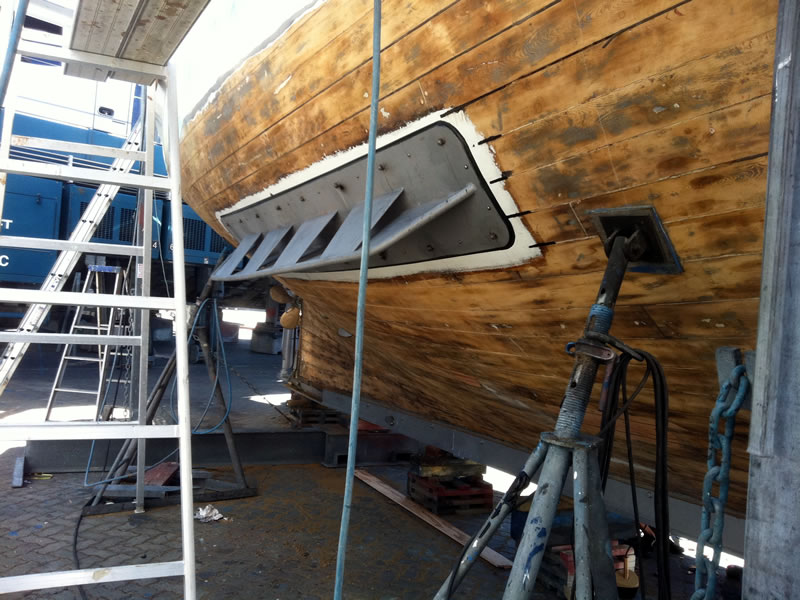bogranjac1
Senior Member
Rolling Chocks - I based my design on those very pics on google and read a lot of articles about how the lobstermen of the PNW employed them on their boats.
Thought I would make some and just see for myself if they worked, better than the opinions of others that never had them.
I went to Bunnings and bought a sheet of marine ply 25mm thick, then
off to the fiberglass supplier for some matt and resin. Cost around $ 200 including all sundry extras like acetone /sandpaper pads /rollers /etc.
1. I needed to make a template of the hull curve where I intended fitting the chocks. Just go to nearest white goods distributor and get a cardboard box from a fridge or whatever. Straighten it out and brace it with a rod and start cutting till it matches your hull curve.
2. Lay the finished template over the sheet of ply and get a circular saw and start cutting - it should follow the inside curve as long as the blade is not a giant.
3. Just trim any dags off with a hand held surform on the inside curve and round the outside edges nice and smooth. Get your hole saw and put a whole lotta holes along the outside edge - this is important - this is where you keep your bottles of beer
 LOL nah not really !!!
LOL nah not really !!!
These holes are most important to release some pressure on the chocks - kindda like baffles and gives the boat a real nice easy ride. I put mine in after the initial seatrial and found they just finished off the ride perfectly.
4,5,6 There they are fitted. I just tacked them on with some rapid hardening glue first.
I was worried about what would happen to my hull if I happened to hit some submerged object so I just used ONLY 2 layers of fiberglass matt to attach them. I figured that making them sacrificial would be best in the event of some unintended contact.
I put them high up on the side of the hull, to act as hydrofoils and give a bit of lift also - maybe ?? They are parallel with the water line at the leading and following edge and at 90 degrees to hull.
In summary rolling chocks are a poor man's heaven when motoring and
along with employing flopper stoppers when anchored the combined effect is Bliss.
Thought I would make some and just see for myself if they worked, better than the opinions of others that never had them.
I went to Bunnings and bought a sheet of marine ply 25mm thick, then
off to the fiberglass supplier for some matt and resin. Cost around $ 200 including all sundry extras like acetone /sandpaper pads /rollers /etc.
1. I needed to make a template of the hull curve where I intended fitting the chocks. Just go to nearest white goods distributor and get a cardboard box from a fridge or whatever. Straighten it out and brace it with a rod and start cutting till it matches your hull curve.
2. Lay the finished template over the sheet of ply and get a circular saw and start cutting - it should follow the inside curve as long as the blade is not a giant.
3. Just trim any dags off with a hand held surform on the inside curve and round the outside edges nice and smooth. Get your hole saw and put a whole lotta holes along the outside edge - this is important - this is where you keep your bottles of beer
These holes are most important to release some pressure on the chocks - kindda like baffles and gives the boat a real nice easy ride. I put mine in after the initial seatrial and found they just finished off the ride perfectly.
4,5,6 There they are fitted. I just tacked them on with some rapid hardening glue first.
I was worried about what would happen to my hull if I happened to hit some submerged object so I just used ONLY 2 layers of fiberglass matt to attach them. I figured that making them sacrificial would be best in the event of some unintended contact.
I put them high up on the side of the hull, to act as hydrofoils and give a bit of lift also - maybe ?? They are parallel with the water line at the leading and following edge and at 90 degrees to hull.
In summary rolling chocks are a poor man's heaven when motoring and
along with employing flopper stoppers when anchored the combined effect is Bliss.


